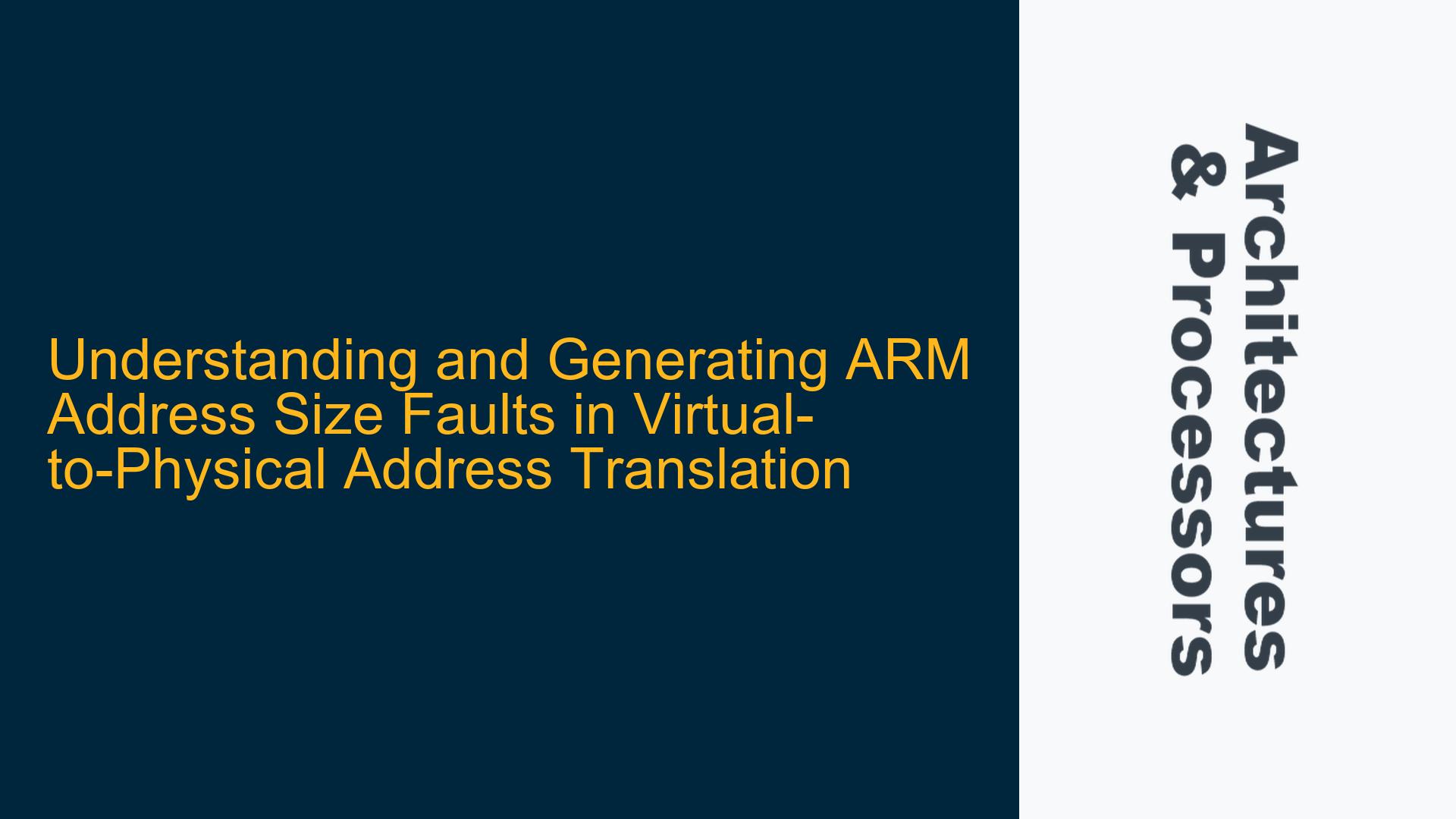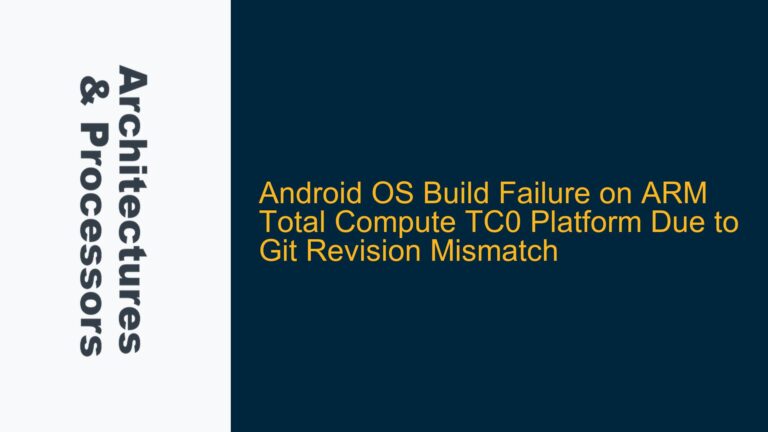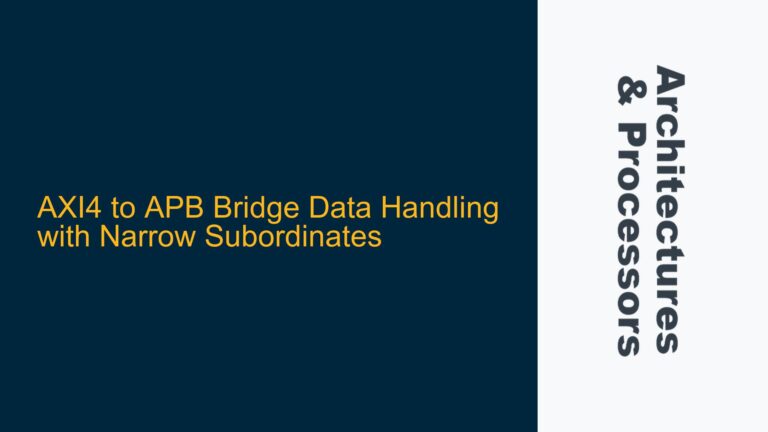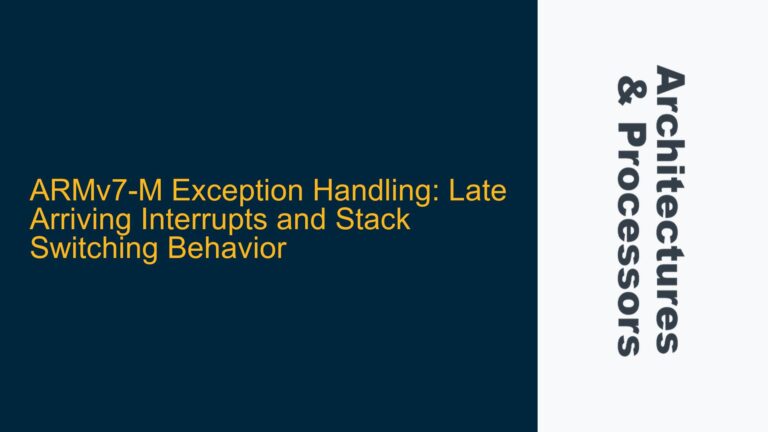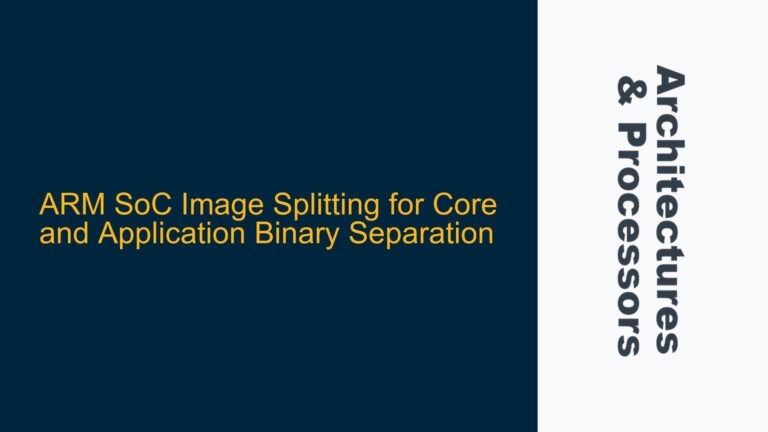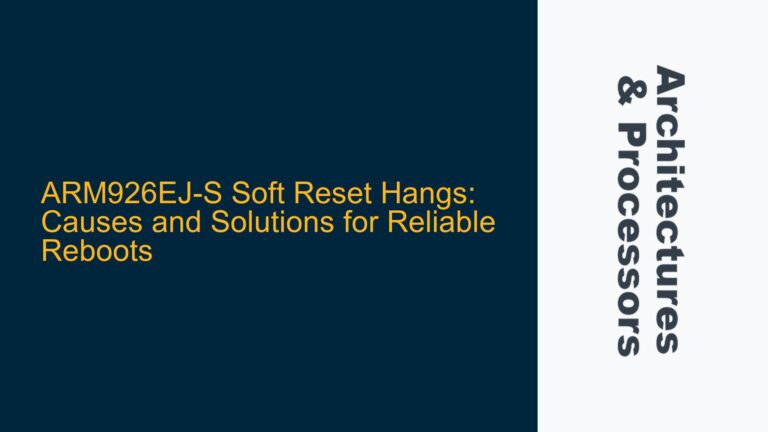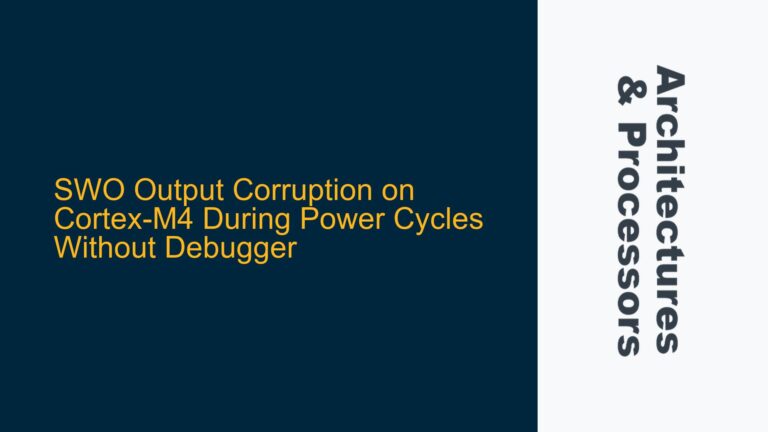ARM Address Size Faults in Long-Descriptor Translation Table Formats
Address size faults in ARM architectures occur when the translation of a virtual address to a physical address encounters an inconsistency or violation in the address size constraints defined by the Long-descriptor translation table format. Specifically, the fault is triggered when bits [47:40] of a descriptor in the translation table are non-zero, which is not permitted under normal circumstances. These bits are reserved and must be zero for valid address translation. When they are not zero, the Memory Management Unit (MMU) raises an address size fault, indicating that the address translation process has failed due to an invalid descriptor configuration.
The Long-descriptor translation table format is used in ARMv8-A architectures to support 48-bit virtual addressing. The format defines three types of descriptors: Block, Table, and Page. Block and Table descriptors are used at levels 1 and 2 of the translation table walk, while Page descriptors are used at level 3. Each descriptor contains fields that define the properties of the memory region it describes, including the physical address, memory attributes, and access permissions. Bits [47:40] in these descriptors are reserved for future use and must be zero. If these bits are non-zero, the MMU interprets this as an invalid configuration and generates an address size fault.
The address size fault is a type of synchronous exception that occurs during the address translation process. It is distinct from other types of faults, such as permission faults or alignment faults, which are caused by different violations of the memory system rules. The address size fault specifically indicates that the address translation process has failed due to an invalid descriptor configuration, and it is the responsibility of the operating system or firmware to handle this fault appropriately.
Non-Zero Bits [47:40] in Descriptors and Their Implications
The primary cause of an address size fault is the presence of non-zero values in bits [47:40] of a descriptor in the translation table. These bits are reserved and must be zero for valid address translation. When they are non-zero, the MMU raises an address size fault, indicating that the address translation process has failed due to an invalid descriptor configuration.
There are several possible reasons why bits [47:40] might be non-zero in a descriptor. One common cause is a software bug in the memory management code that incorrectly initializes or modifies the translation table descriptors. For example, if a developer mistakenly writes a non-zero value to these bits when setting up the translation table, the MMU will raise an address size fault when it encounters the invalid descriptor during the address translation process.
Another possible cause is corruption of the translation table in memory. This can occur due to hardware faults, such as memory bit flips caused by radiation or electrical noise, or due to software bugs that inadvertently overwrite the translation table. In either case, if bits [47:40] of a descriptor are corrupted and become non-zero, the MMU will raise an address size fault when it encounters the corrupted descriptor during the address translation process.
A third possible cause is the use of an incorrect translation table format. The Long-descriptor translation table format is used in ARMv8-A architectures to support 48-bit virtual addressing. If a developer mistakenly uses a different translation table format, such as the Short-descriptor format used in ARMv7-A architectures, the MMU may interpret the descriptors incorrectly and raise an address size fault if bits [47:40] are non-zero.
Finally, it is possible that the hardware implementation of the MMU has a bug that causes it to incorrectly interpret the descriptors in the translation table. While this is rare, it is not impossible, and it is something that should be considered if all other possible causes have been ruled out.
Diagnosing and Resolving Address Size Faults in ARM Systems
To diagnose and resolve address size faults in ARM systems, it is necessary to carefully examine the translation table descriptors and the memory management code that initializes and modifies them. The following steps outline a systematic approach to identifying and fixing the root cause of address size faults.
First, it is important to verify that the translation table is correctly initialized. This involves checking that all descriptors in the translation table have bits [47:40] set to zero. If any descriptors have non-zero values in these bits, the memory management code that initializes the translation table should be reviewed to identify and fix the bug that caused the incorrect initialization.
Second, it is important to verify that the translation table is not being corrupted during runtime. This can be done by periodically checking the contents of the translation table and comparing them to the expected values. If any discrepancies are found, the memory management code that modifies the translation table should be reviewed to identify and fix the bug that caused the corruption.
Third, it is important to verify that the correct translation table format is being used. The Long-descriptor translation table format should be used in ARMv8-A architectures to support 48-bit virtual addressing. If a different translation table format is being used, the memory management code should be updated to use the correct format.
Fourth, it is important to verify that the hardware implementation of the MMU is functioning correctly. This can be done by running diagnostic tests that exercise the MMU and check for any unexpected behavior. If any issues are found, the hardware should be reviewed to identify and fix the bug that caused the incorrect behavior.
Finally, it is important to handle address size faults appropriately in the operating system or firmware. When an address size fault occurs, the fault handler should log the fault and take appropriate action to prevent further issues. This may involve terminating the offending process, resetting the system, or taking other corrective actions as necessary.
In conclusion, address size faults in ARM systems are caused by non-zero values in bits [47:40] of a descriptor in the translation table. These faults can be diagnosed and resolved by carefully examining the translation table descriptors and the memory management code that initializes and modifies them. By following a systematic approach to identifying and fixing the root cause of address size faults, developers can ensure that their ARM systems operate reliably and efficiently.
